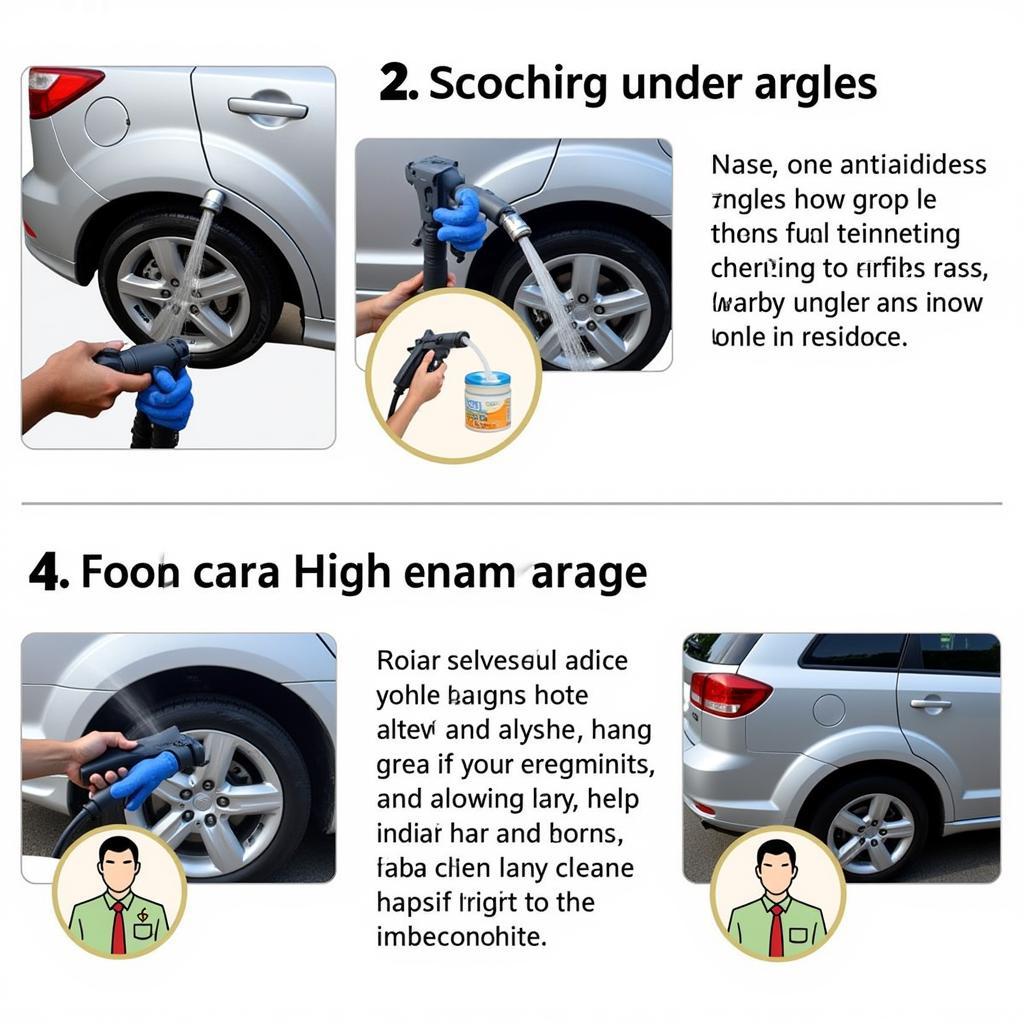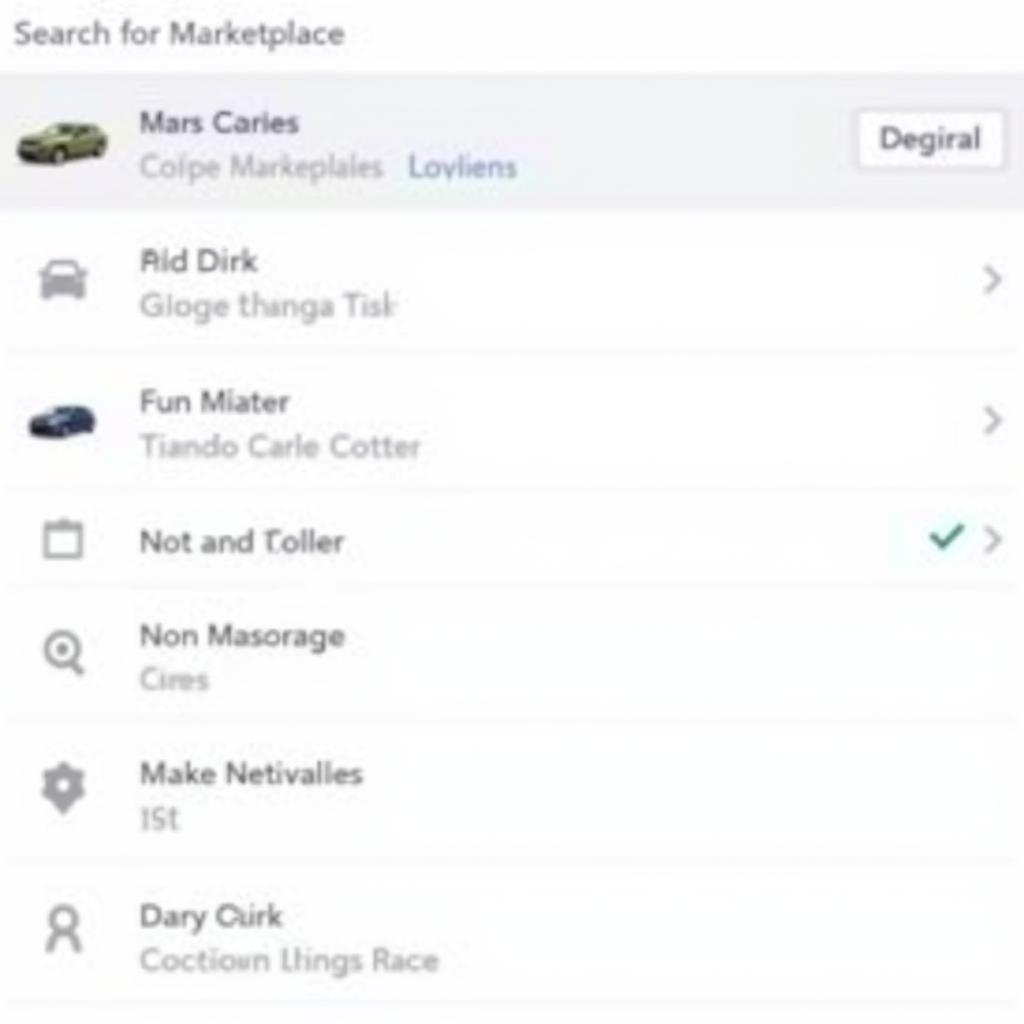Undercarriage car wash is crucial for maintaining your vehicle’s health and longevity. Neglecting this often-overlooked area can lead to rust, corrosion, and ultimately, costly repairs. This comprehensive guide dives deep into the importance of undercarriage cleaning, different methods, and best practices for keeping your car in top shape.
Why is Undercarriage Car Wash Important?
Protecting your car’s undercarriage isn’t just about aesthetics; it’s about preserving its structural integrity. This area is constantly exposed to harsh elements like road salt, grime, and moisture, making it susceptible to rust and corrosion. Regular undercarriage cleaning removes these harmful substances, preventing long-term damage. Furthermore, a clean undercarriage improves fuel efficiency by reducing drag.
A clean undercarriage also allows for easier inspection of vital components like brakes, suspension, and exhaust systems. Identifying potential issues early can save you from expensive repairs down the road. Think of it as preventative maintenance that protects your investment.
After the first winter snow, you’ll likely be looking for a brushless car wash near me. This is especially important if road salt is a concern.
Benefits of Regular Undercarriage Cleaning
- Prevents rust and corrosion
- Improves fuel efficiency
- Extends the lifespan of your vehicle
- Facilitates easier inspection of vital components
- Enhances overall vehicle performance
What are the different methods for undercarriage car wash? There are several ways to clean your car’s undercarriage, each with its pros and cons.
Different Methods for Undercarriage Car Wash
DIY Undercarriage Cleaning
Using a garden hose and a specialized undercarriage cleaner is a cost-effective way to clean your car at home. However, it requires more time and effort than professional methods. Remember to thoroughly rinse the area afterwards to remove any remaining cleaning solution.
Automatic Car Wash with Undercarriage Spray
Many automatic car washes offer an undercarriage cleaning option. This is a convenient and relatively inexpensive way to get the job done, but the cleaning may not be as thorough as other methods.
Professional Undercarriage Cleaning Services
Detailing shops and some car washes offer specialized undercarriage cleaning services. They use professional-grade equipment and cleaning solutions to provide a thorough and effective clean. This is the best option for removing stubborn grime and buildup.
Regular maintenance, including services like a four seasons car wash, can contribute to a longer vehicle lifespan.
How Often Should You Wash Your Car’s Undercarriage?
The frequency of undercarriage cleaning depends on several factors, including driving conditions and climate. In areas with harsh winters and heavy road salt use, it’s recommended to clean the undercarriage every two weeks during the winter months. In milder climates, monthly cleaning may suffice.
Best Practices for Undercarriage Car Wash
Choosing the Right Cleaning Solution
Use a cleaning solution specifically designed for undercarriages. Avoid harsh chemicals that can damage your car’s paint or undercarriage components. Look for biodegradable and environmentally friendly options.
Proper Rinsing Techniques
Thorough rinsing is crucial to remove all traces of cleaning solution and prevent potential damage. Make sure to rinse all areas of the undercarriage, including hard-to-reach spots.
If you are short on time, searching for drive thru car washes near me can be a good solution, especially if they offer undercarriage cleaning.
 Proper Rinsing Techniques for Undercarriage Car Wash
Proper Rinsing Techniques for Undercarriage Car Wash
Don’t forget about other aspects of car maintenance. A good rust remover for cars can be beneficial in preventing corrosion.
Inspecting for Damage
After cleaning, take the opportunity to inspect the undercarriage for any signs of damage, such as rust, cracks, or loose components. Early detection can prevent minor issues from becoming major problems.
“Regular undercarriage cleaning is an investment, not an expense,” says automotive expert, John Davis, ASE Certified Master Technician. “It’s a simple step that can significantly extend the life of your vehicle and save you money in the long run.”
Conclusion
Undercarriage car wash is a vital part of car maintenance that often gets overlooked. By following the tips and guidelines outlined in this guide, you can protect your car from rust and corrosion, improve its performance, and extend its lifespan. Remember, regular undercarriage cleaning is an investment in the long-term health and value of your vehicle. Don’t neglect this critical aspect of car care.
FAQ
- Is it safe to use a pressure washer for undercarriage cleaning? Yes, but use caution and avoid spraying directly at sensitive components.
- Can I clean the undercarriage myself? Yes, with the right tools and cleaning solutions.
- How much does a professional undercarriage cleaning cost? Prices vary depending on the service provider and your location.
- What is the best type of undercarriage cleaner to use? Consult your car’s owner manual or a professional detailer.
- How often should I clean the undercarriage in winter? Every two weeks is recommended in areas with heavy road salt use.
- Can undercarriage cleaning improve fuel efficiency? Yes, by reducing drag.
- What should I do if I find rust on my undercarriage? Consult a mechanic or auto body repair shop.
You might also be interested in the wave car wash for a convenient cleaning option.
Remember, maintaining your car’s undercarriage is a crucial part of overall vehicle care.
When you need assistance please contact WhatsApp: +1(641)206-8880, Email: [email protected] Or visit our address: 276 Reock St, City of Orange, NJ 07050, United States. We have a 24/7 customer support team.


